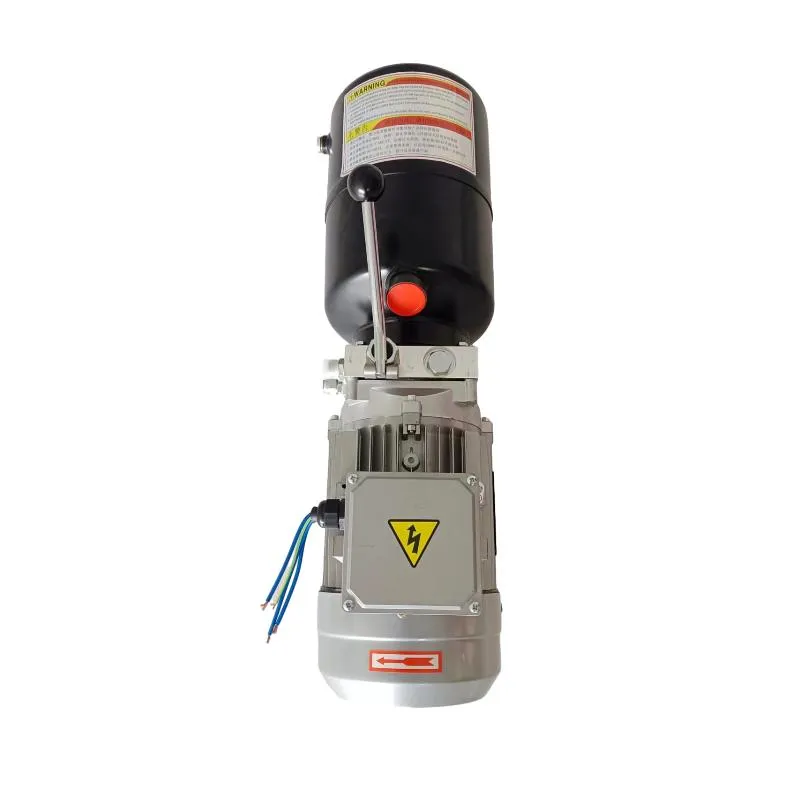Nov . 16, 2024 12:10 Back to list
changing seals in hydraulic cylinder products
Changing Seals in Hydraulic Cylinder Products An Essential Guide for Maintenance
Hydraulic cylinders are pivotal components in various industrial, agricultural, and construction applications. They function by converting hydraulic energy into mechanical force, facilitating the movement of heavy objects with precision and power. However, like any machine, hydraulic cylinders require regular maintenance to ensure optimal performance, and one of the most critical aspects of this maintenance is changing the seals. This article delves into the importance of seals, the process of changing them, and tips for ensuring a successful replacement.
Importance of Seals in Hydraulic Cylinders
Seals in hydraulic cylinders serve a dual purpose they prevent hydraulic fluid from escaping the system and keep contaminants out. Proper sealing is vital for maintaining system pressure and efficiency. Any degradation in the seal can lead to leaks, reduced performance, and, ultimately, catastrophic failure of the hydraulic system.
Several factors can affect the longevity and integrity of hydraulic seals, including temperature fluctuations, pressure variations, and exposure to harsh chemicals or materials. Regular inspection and timely replacement of seals can prevent these issues, extending the lifecycle of the hydraulic cylinder and improving overall system reliability.
Identifying When to Change Seals
Recognizing the signs that a seal needs to be replaced is crucial for maintaining hydraulic cylinder functionality. Common indicators include
1. Fluid Leaks Visible signs of hydraulic fluid escaping from the cylinder are the most obvious indication that the seals may be compromised. 2. Decreased Performance If the hydraulic cylinder exhibits slower response times or struggles to generate expected force, it could be due to seal failure, leading to loss of pressure.
3. Unusual Noise Grinding or squeaking sounds during operation may suggest that internal components are not being properly lubricated due to seal issues.
4. Surface Damage Inspecting the seals for wear, cracks, or other physical damage can provide early warnings that a replacement is necessary.
The Seal Replacement Process
changing seals in hydraulic cylinder products

Changing seals in hydraulic cylinders is a task that requires attention to detail and an understanding of the system. Below is a step-by-step guide to assist with the process
1. Preparation Before starting, ensure you have the required tools and replacement seals. Verify the specifications of the cylinder to select appropriate seals.
2. Disassembly Safely disassemble the hydraulic cylinder. Release any pressure, and drain the hydraulic fluid to prevent spills. Carefully remove the cylinder from its mount.
3. Seal Removal Remove the old seals using a seal removal tool or a flat-headed screwdriver, taking care not to scratch the cylinder's surface. Clean the groove where the seal was seated.
4. Installation of New Seals Lubricate the new seals with clean hydraulic fluid and carefully place them into the grooves. Ensure they are properly seated and aligned.
5. Reassembly Reassemble the hydraulic cylinder, ensuring all components are correctly aligned. Refill the hydraulic fluid and check for the appropriate pressure before operating the system.
6. Testing Once reassembled, test the hydraulic cylinder under normal operating conditions to ensure it functions correctly without leaks.
Tips for Successful Seal Replacement
- Regular Maintenance Include seal inspection in your routine maintenance schedule to catch issues early. - Select Quality Seals Investing in high-quality seals can significantly improve the longevity of your hydraulic systems. - Follow Manufacturer Guidelines Always refer to the equipment manufacturer's guidelines for specific instructions on seal replacement.
Conclusion
Changing seals in hydraulic cylinder products is a crucial task in maintaining hydraulic systems' efficiency and reliability. By recognizing the signs of seal failure and understanding the replacement process, operators can significantly enhance the performance and lifespan of their hydraulic cylinders. Regular maintenance, prompt replacement, and adherence to best practices are key to ensuring smooth operations and preventing costly downtimes.
-
Fork Lift Power Units - Hebei Shenghan | Efficiency, Reliability
NewsJul.13,2025
-
1.5-Ton Turbocharged Cylinder-Hebei Shenghan|Hydraulic Solution,Energy Efficiency
NewsJul.13,2025
-
Auto Hoist Power Units-Hebei Shenghan|Efficiency&Industrial Lifting
NewsJul.13,2025
-
Double Acting Power Units-Hebei Shenghan|Hydraulic Solutions,Industrial Efficiency
NewsJul.13,2025
-
1.5 Ton Lifting Cylinder 70/82-40-290-535 - High-Performance Hydraulic Solution | Hebei Shenghan
NewsJul.13,2025
-
Fork Lift Power Units - Hebei Shenghan | Efficiency&Reliability
NewsJul.13,2025
